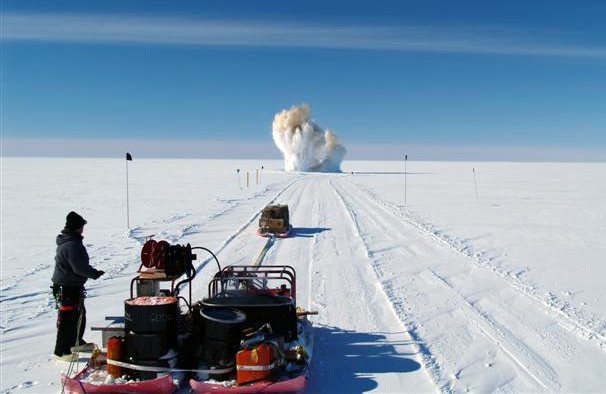As a result of my efforts and that of my colleagues, we now have 3 cameras on the sky, seeing "first light" over this past weekend. Two are now on Keck Array, set to map the sky at the "blue" 220GHz, and the much larger BICEP-3, set to map the sky at the "red" 95GHz.
Above is a time-lapse video of us loading BICEP-3 into the mount, spanning about 1 hour of work. You don't see me much because I'm the one in the back turing the wench and actually lifting the camera (1200 lbs) up into place. I like this slightly blurred photo that someone took of me:
You also don't see the 3-4 people up in the mount watching to make sure the camera does not crush any cables or lines during lifting. Here's an artistically modified photo of some of them working on that, made to look like a comic book drawing:
Finally, a photo of the gang experiencing "first light" of BICEP-3 on Tuesday:
I missed out on that, although I did get to watch one of the Keck-220s turn on. This happened the same evening that our friends on the Event Horizon Telescope turned on and made a quick low-resolution map of the center of our galaxy. As is the custom, we all drank a celebratory wee dram. And as I described earlier, we enjoy a healthy camaraderie with our DSL colleagues (in this context, Event Horizon is an extension of the South Pole Telescope)
As of now, all three cameras "work" inasmuch that they can look at the sky without the sky appearing too bright and saturating the sensors. The team is currently in the process of characterizing how they work, and the results of these measurements will be used when analyzing the maps made by the camera as well as for understanding any flaws so we can fabricate better detectors in the future. Now it's time for science







